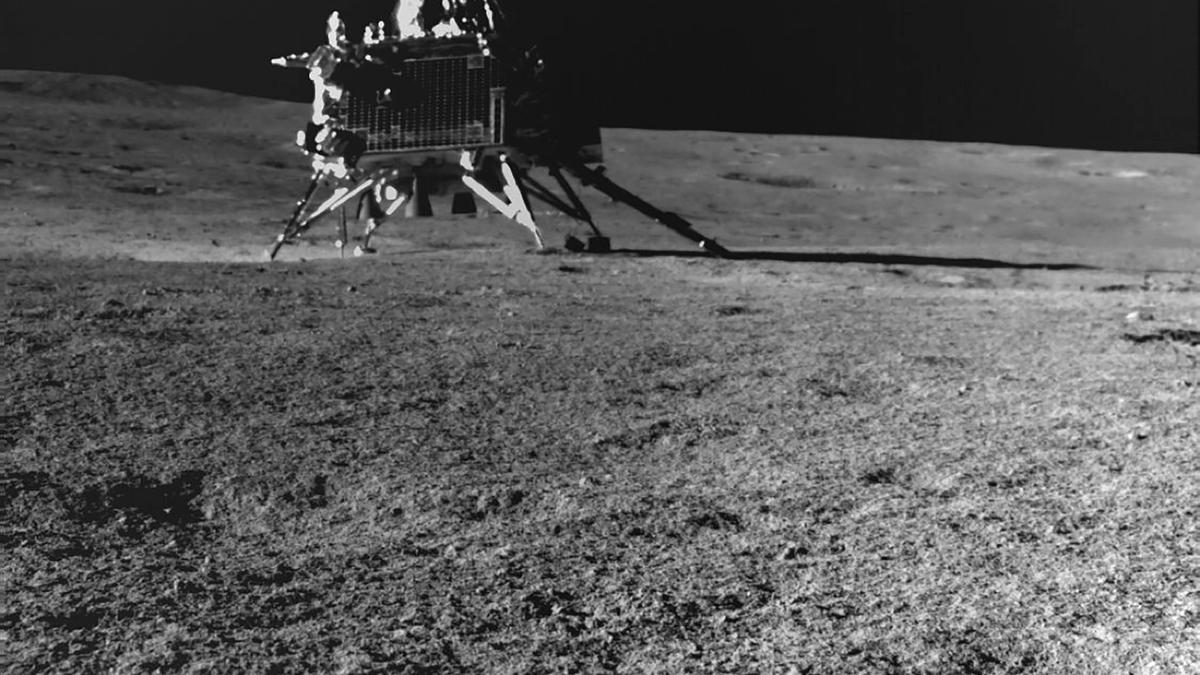In the Chandrayaan-2 mission in 2019, there were three errors that happened in succession causing the lander to crash on the moon. It would have been a success if any of the three errors had not happened
On July 22, 2019, India successfully launched Chandrayaan-2, the second mission to the moon. Twenty-two days later (August 14), after a series of orbit raising manoeuvres, the spacecraft finally escaped the earth’s gravity and followed a path towards the moon. Six days later, Chandrayaan-2 was successfully inserted into lunar orbit. Finally, on September 2, the Vikram lander separated from the Orbiter, performed two de-orbit manoeuvres and on September 6, began its descent to the moon’s surface. The descent went as planned up to an altitude of 2.1 km from the Moon’s surface before communication from the lander to the ground stations was lost. The Vikram lander had apparently crash-landed on the Moon.
Soon a national-level failure analysis committee headed by Dr. V. Narayanan, Director of the Liquid Propulsion Systems Centre (LPSC), was formed with experts drawn from national institutes and ISRO to study the cause of failure and to propose necessary corrections. The committee pinpointed three crucial mistakes that had happened in succession resulting in the crash.
There are four important phases before the touchdown on the moon — the rough braking phase, the attitude-hold (orientation) phase, the fine braking phase, and the landing phase.
Cause of crash
During the rough braking phase, the velocity of the lander was successfully reduced to a maximum. The problem with the touchdown began when the Vikram lander entered the second phase — the attitude-hold (orientation) phase. During this phase, the thrust had to be maintained at half the level. “But when the engines were commanded to provide half the thrust, the achieved thrust was more than half. The dispersion level [variation in the thrust] was more than what we had assumed during the pre-flight simulations,” explains Dr. K. Sivan, former Chairman of ISRO under whose watch the Chandrayaan-2 was launched in 2019.
The guidance system was supposed to have halved the thrust but it malfunctioned. “The guidance system was not designed to handle large dispersions, and this resulted in the guidance system malfunctioning leading to full thrust being given to the lander,” says Dr. Sivan. “At the end of the attitude-hold phase, the altitude and velocity were very different from the expected values. The guidance-system malfunction was the second crucial error.”
According to Dr. Sivan, during the fine braking phase, the system was trying to correct the large errors. The large-scale corrections to velocity and altitude demanded large orientation manoeuvres. Changes to orientation are carried out by the control system, but unfortunately the control system was not designed to produce large changes. “Even though there was a large demand for orientation change, the control system restricted the rate.
As a result, the control system was unable to provide the necessary large corrections to orientation,” Dr. Sivan says. “The control system was taking more time to correct the orientation due to rate restriction. But by that time the lander had reached the moon’s surface.” This resulted in the lander crashing on the moon.
The crash was caused by three mistakes — the thrust (dispersion level) was more than assumed for design, the flaw in the guidance system resulted in more thrust being given, and the rate restriction in the control system failed to make large-scale changes in the orientation. “The Chandrayaan-2 mission would have been a success if any of the three errors was not there. The three cumulative errors led to the failure,” he says.
Correcting the mistakes
Taking the learnings from Chandrayaan-2 failure, ISRO corrected for all the three major mistakes in the latest mission — the system was corrected to ensure extra dispersion does not happen, the guidance system was corrected, and the restriction in the control system was removed. “These were the major corrections in Chandrayaan-3 lander.
Redundancy was also built into Chandrayaan-3 lander in terms of extra sensors, and extra propellant to allow it to travel to an alternate landing site, if required. And the landing area was expanded from a narrow patch of 500 metres x 500 metres to a 4 km x 2.4 km region.
In addition, other improvements suggested by the failure analysis committee were also incorporated in the Chandrayaan-3 mission.
Extra fuel, sensors and stronger lander legs designed for higher landing velocity led to a net increase in the weight (about 250 kg) of the lander.
Since Chandrayaan-3 was not carrying an orbiter like its predecessor, it became possible to accommodate the increased weight.
“Increased weight of the lander meant that a single engine was not sufficient. So the central engine was removed and two engines were used for landing,” Dr. Sivan says. “The central engine was added in the earlier mission as it was suspected that dust stirred by other engines would affect the electronic components. But our analysis found that dust wasn’t a problem.”



Recommended Comments
There are no comments to display.
Join the conversation
You can post now and register later. If you have an account, sign in now to post with your account.
Note: Your post will require moderator approval before it will be visible.